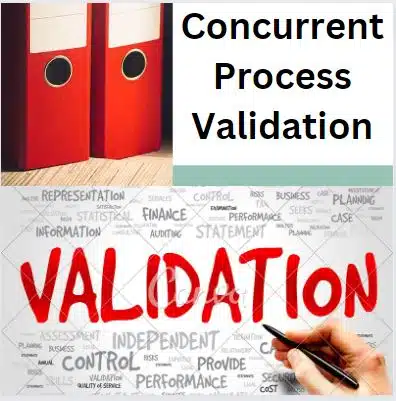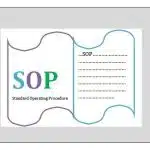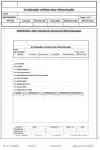Learn how to write a standard procedure for Concurrent Process Validation in the Pharmaceutical Industry.
Table of Contents
1.0 PURPOSE
To describe standard procedure for Concurrent Process Validation of all products in the pharmaceutical industry.
2.0 SCOPE
This SOP is applicable for Concurrent Process Validation When production, testing, and other information for a product already in production and distribution are insufficient for retrospective process validation.
3.0 RELATED DOCUMENTS
Nil

4.0 RESPONSIBILITY
4.1 The Department of Quality Assurance carries out concurrent process validation.
4.2 The Quality Assurance Manager and Executive make up the Validation Team for Concurrent Process Validation. Production Manager, Q.C. Manager, and Q.A. Validation.
4.3 The Q.C Manager is in charge of overseeing the testing of validation samples and confirming all Q.C outcomes.
4.4 The Quality Assurance manager approves the protocol, report, and any process modification suggested by the validation team.
Read Also: SOP for Annual Product Quality Reviews (APQR)
5.0 ACCOUNTABILITY
Head of Quality Assurance
6.0 PRECAUTIONS
Nil
7.0 PROCEDURE
7.1 The following conditions require concurrent process validation (on three consecutive batches):
7.1.1. The procedure has not yet been prospectively validated
7.1.2. When data from testing, production, and other sources for a product that is already in distribution and use is insufficient for a retrospective procedure.
7.2 The Executive Q.A. Validation prepares a “Quarterly Schedule for Concurrent Process Validation” in cooperation with the Validation team (based on their production units and therapeutic categories).
7.3 The Production Manager assists the ExecutiveQ.A Validation in creating the process validation protocol and timetable.
7.4 The Validation Team has signed this Schedule. The Q.A Manager has also accepted it, and Executive Q.A Validation has finalized it.
7.5 During process validation, the production pharmacist checks the processing processes in conjunction with the quality assurance department.
7.6 Process validation is done in accordance with the protocol.
7.7 The Q.A. Manager has accepted the Process Validation Protocol, which includes:
7.7.1 Goals, Responsibilities, and Process Description in General
7.7.2 Process Flow Diagram
7.7.3 Materials to be utilized for raw and primary packaging.
7.7.4 List of Required Equipment
7.7.5 Important processing steps and their controlling factors.
7.7.6 Each processing stage’s environmental needs.
Sampling plan with responsibilities and the test to be run.
7.7.8 Comparison of batch yield and quantity in steps.
7.7.9 Hold-Time Study
7.8 At the moment of protocol approval, Executive Q.A Validation assigns Protocol Numbers for Concurrent Process Validation Protocol (CPVP) and Report Numbers for Concurrent Process Validation Report (CPVR) from the Process Validation Log Book.
7.9 A uniform numbering system is used to assign Protocol and Report numbers. This system is as follows: X/Y/000
X = Protocol or Report, for example, CPVP (Concurrent Process Validation Protocol) or CPVR (Concurrent Process Validation Report).
Y= stands for “Product Code” and
“000”= stands for “Serial Number.”
For instance, the protocol number and report number for Monadol tablets are as follows: protocol number =CPVP/PAR/001, report number =CPVR/PAR/001.
7.10 The Report No.’s serial number matches the Protocol No.’s serial number.
7.11 Executive Q.A. Validation, with the assistance of the validation team, completes the Process Validation Protocol and Process Validation Report.
7.12 Validation of executive Q.A. Process observation, parameter recording, physical testing (optional), and validation sampling are all done by an officer.
7.13 Executive Q.A. Validation/Q.A. Officer gathers the validation samples in accordance with the protocol’s sampling plan and sends them to the quality control department for analysis.
7.14 Validation samples are different from those obtained by Q.A. for Q.C testing and are not used for product release.
7.15 HOLD-TIME STUDY
7.15.1 Only one validation batch is used for the hold-time study.
The protocol specifies the stages that must be sampled for each product type’s hold-time study.
7.15.2 Keep the samples for as long as the validation team deems necessary, up to 60 days.
7.15.3 Testing is carried out in accordance with protocol every 0, 30, or 60 days, depending on the validation team’s decision, and the tests’ acceptance criteria must meet stability requirements.
7.15.4 The initial time point of testing (i.e. “0” storage days) for the Hold time study is determined by the test results at the time the sample was stored, such as the final granules results, the bulk cores results, etc.
7.15.5 The results of the Hold time study data are not required for the product’s validation or release.
7.15.6 The process validation report also evaluates hold time study data, which is used to determine the product’s maximum processing hold time before moving on to the subsequent manufacturing step.
8.0 ABBREVIATIONS
8.1 SOP: Standard Operating Procedure
8.2 QC: Quality Control
8.3 QA: Quality Assurance
8.4 CPVP: Concurrent Process Validation Protocol
8.5 CPVR: Concurrent Process Validation Report
9.0 ANNEXURES
Nil

Abdus Sobhan Salim is professional experienced pharmacist in pharmaceuticals, author and founder of pharmabossbd.com, the first Bangladeshi pharmaceutical blogger since 2019.



